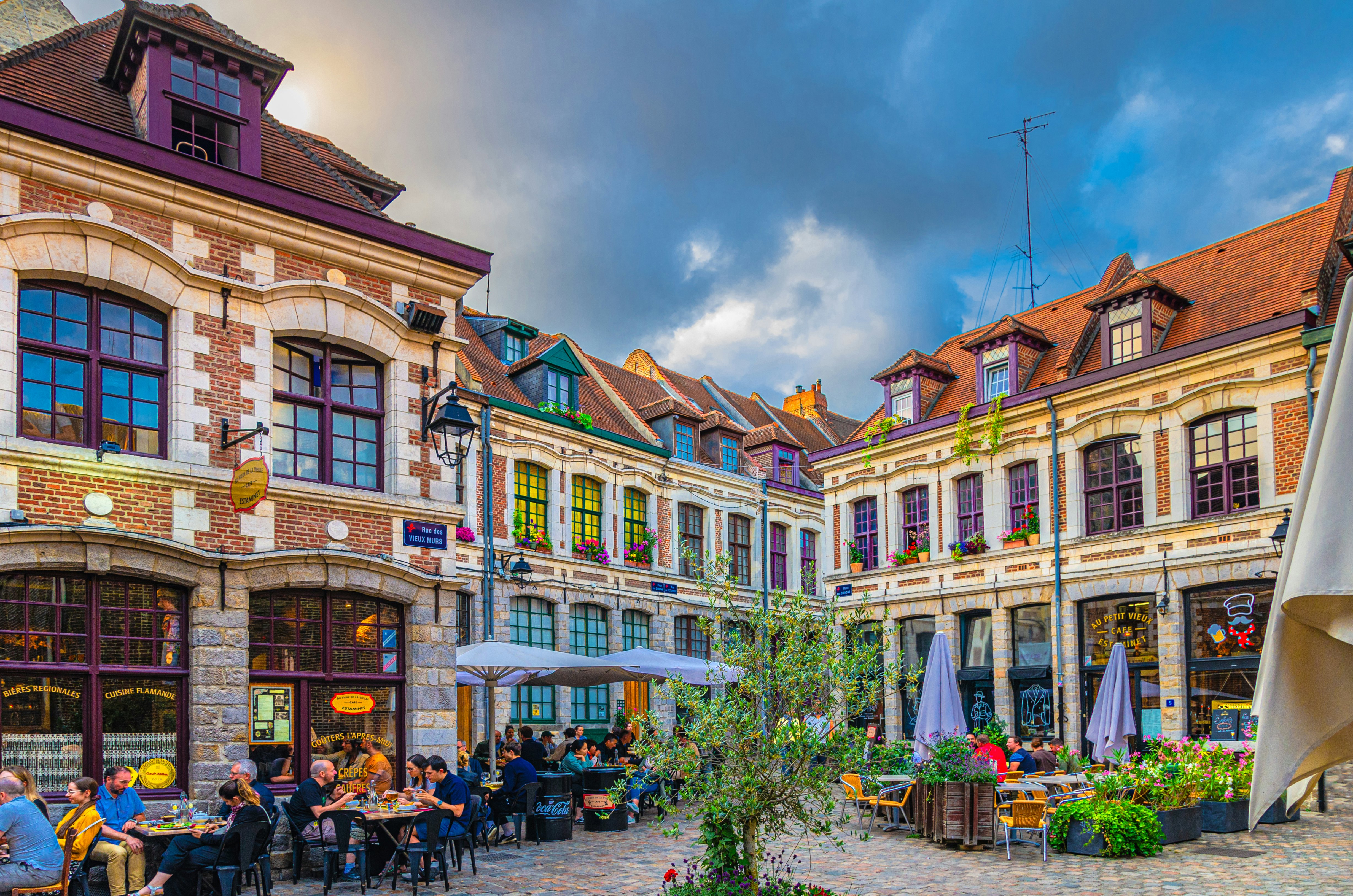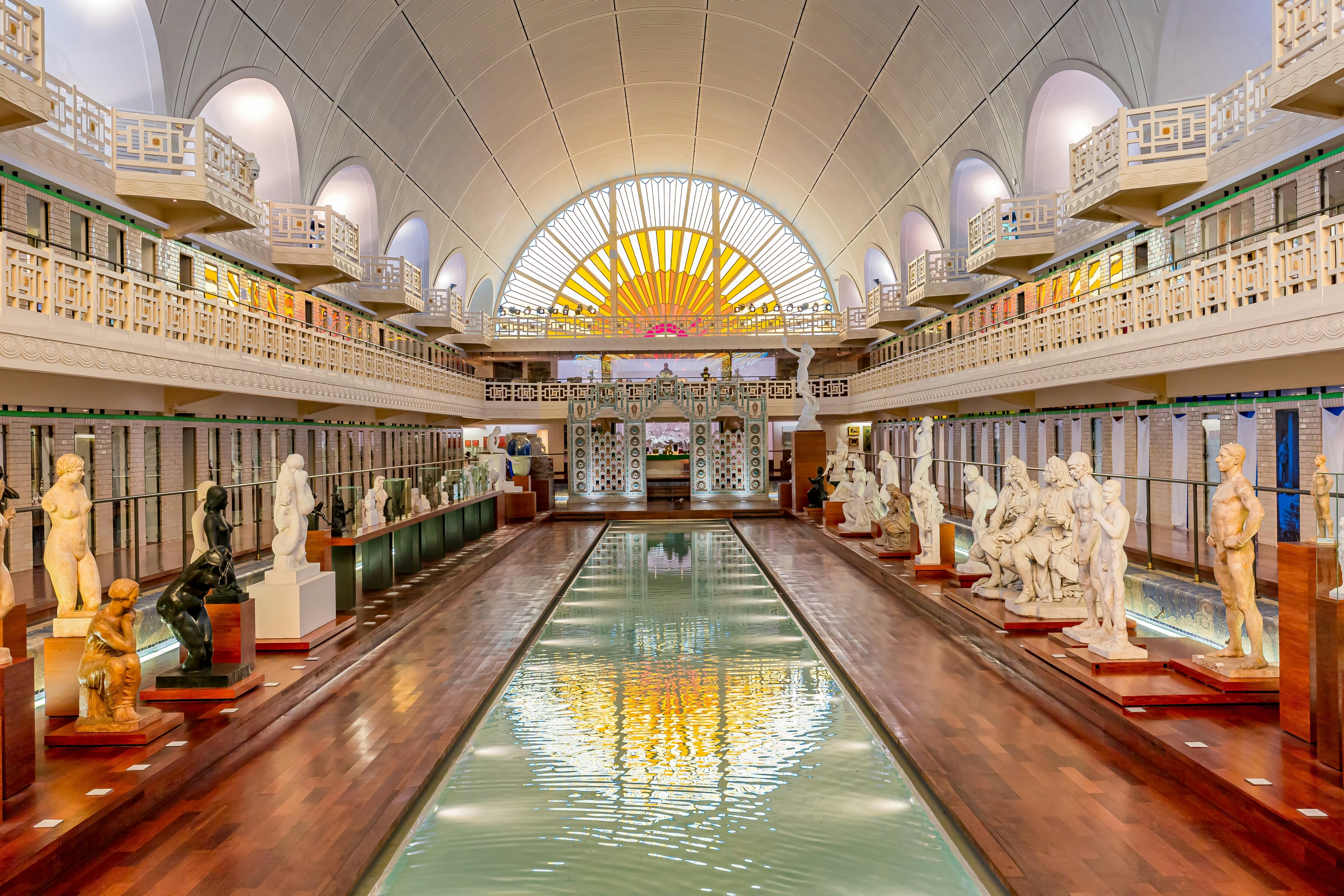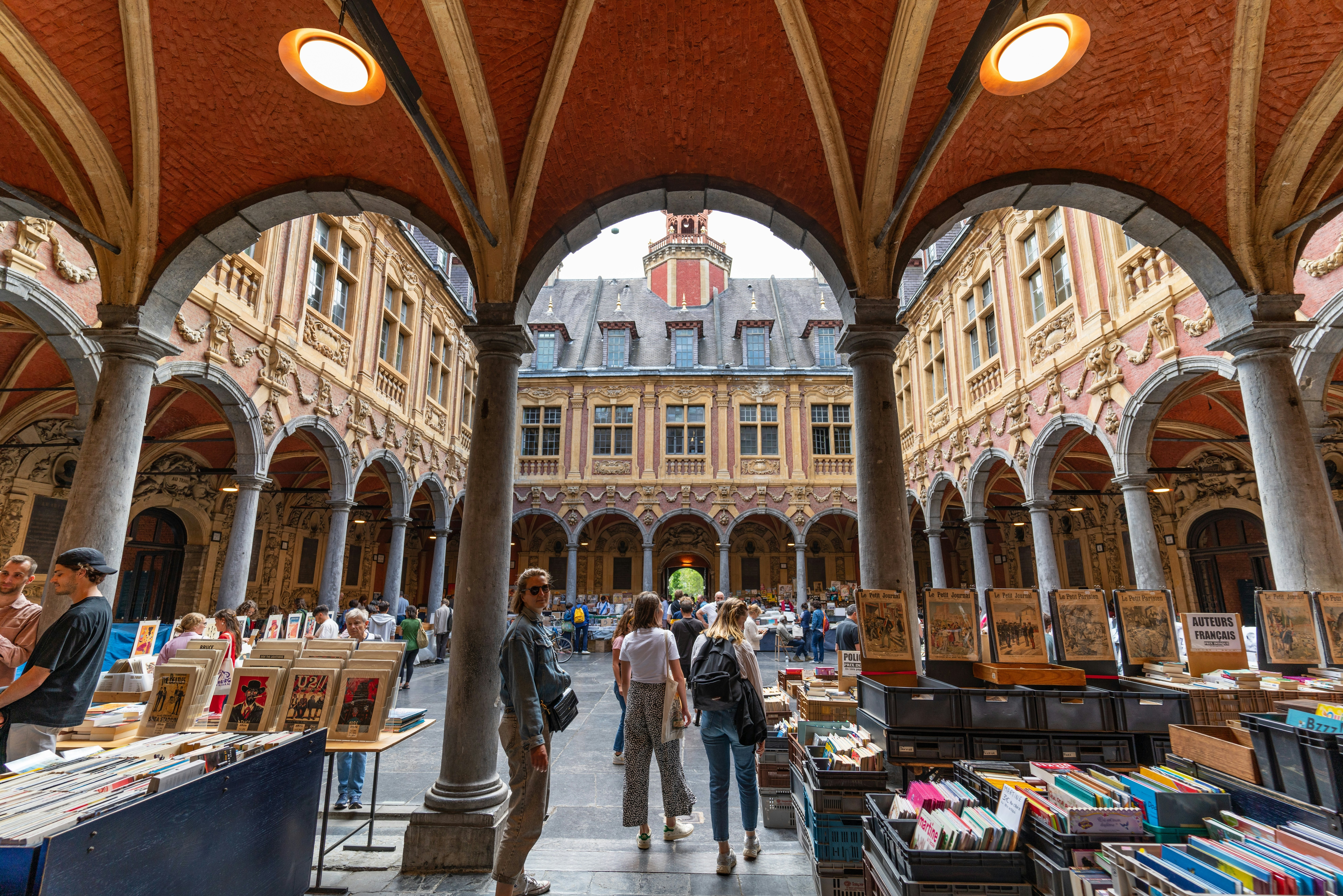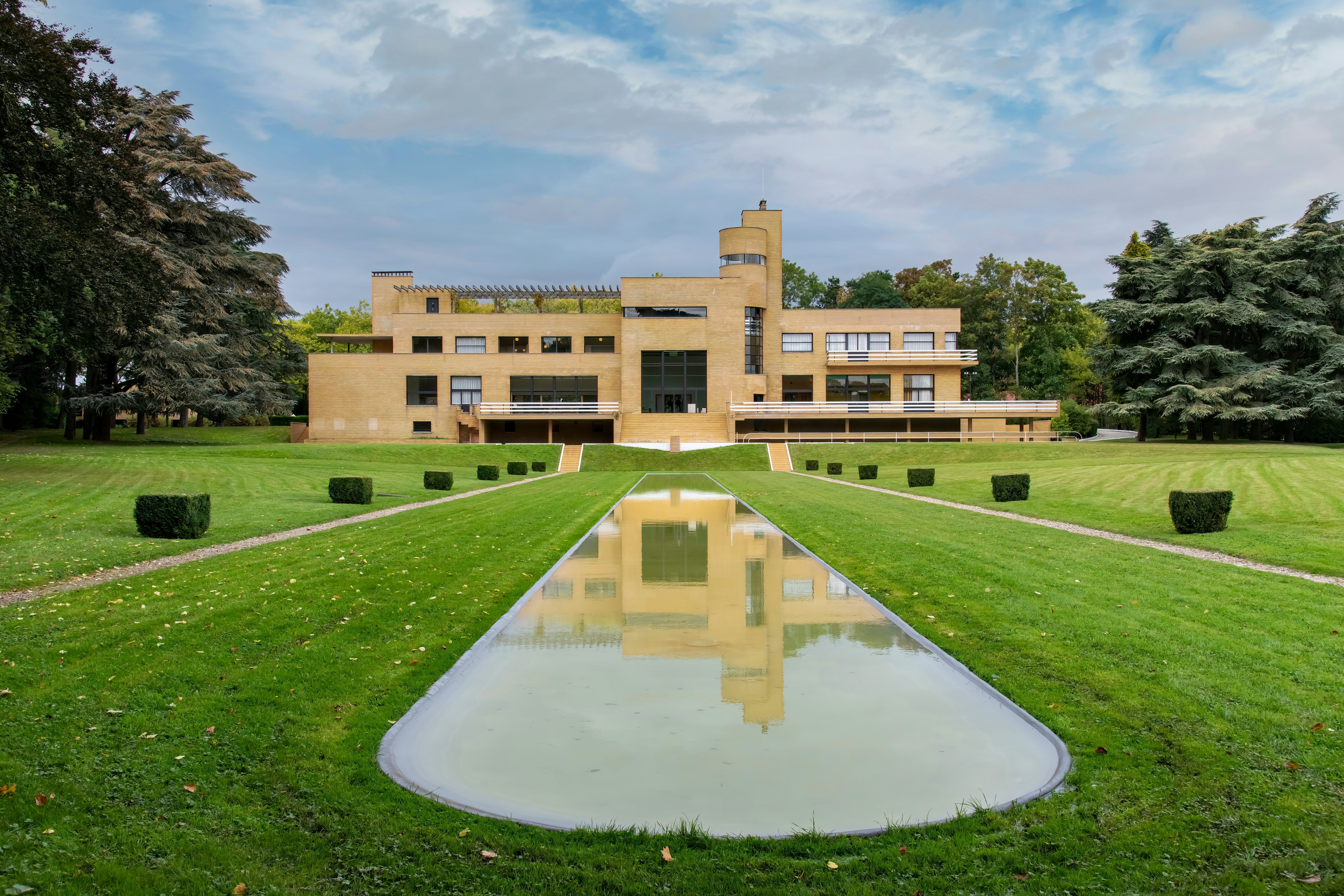A first-time guide to Lille, northern France's cultural and commercial hub

Jun 24, 2025 • 7 min read

Place du Général de Gaulle, Lille. Aliaksandr Antanovich/Shutterstock
Lille is France's star of the north when it comes to city breaks. This vibrant university city is much cheaper and less busy than big European cities, such as Paris, Rome and Venice, but it packs a punch when it comes to art and culture, gastronomy and fun.
Lille lies 130km (80 miles) north of Paris and a similar distance from Belgium, 30 minutes on the train from Brussels and just over an hour from France’s capital. It has thrived as an industrial hub since the 19th century, but it’s now known as a cultural hot spot with a lively, young and creative feel. Combined with this joie de vivre is a lot of history; from Flemish influences which pervade its architecture and food to its occupation by the Germans in the world wars and its suburban testament to 20th-century industrial progress, it’s a dynamic, exciting and surprising place to visit.
When should I go to Lille?
Lille is in the north of France so expect a mild and moderate climate which stays above freezing in winter and climbs into the low 20°Cs (68°F+) in high summer. Spring, summer and fall are the best seasons to visit, but you can do a city break in Lille at any time as attractions stay open all year and there is plenty to do inside.
Lille’s famed , Europe’s largest flea market, engulfs the city in September with millions of bargain hunters, there’s a in October and the in December. Every few years the city holds a cultural festival called – running from April to November in 2025 – and the bicycle race starts in the city on July 5.

How much time should I spend in Lille?
Anything less than a long weekend is doing this city a disservice. You can visit the center in two days but you’d be a fool to leave without tacking a day on to savor one of its nearby crowd-pullers, like fine-arts museum and , both in the Lillois suburb of Roubaix.
If you have more time, you can easily fill a week in Lille’s surrounds. Firstly, the north’s erstwhile is worth a look if you like a bit of grit and social history. The twin Pyramides Noires at Loos-en-Gohelle are the highest slag heaps in Europe and surprisingly beautiful. Others have been turned over to walking trails and biodiverstity and it’s fascinating to see flowers growing out of the black mounds.
Having been bombed heavily during WWI, le nord (the north) went on a rebuilding spree during the interwar years, which resulted in some magnificent art deco architecture. Lille has a few gems, including its wonderful , or you can take a short drive to Béthune for an art-deco walking tour and a dip in the gleaming .
The French government has pumped lots of money into the arts in the north and the is the unmissable jewel in the crown. Its Galerie du Temps is a huge white space which houses 200 works of art arranged chronologically from the 4th century to the mid 19th century.
Is it easy to get in and around Lille?
There is a small airport in Lille but the nearest bigger airport is Brussels, 120km (75 miles) away. Train is the best way to travel to Lille as it’s so well connected; there are two main train stations in the center just 0.5km (0.3 miles) from each other. Lille-Europe is a major European railway hub and Lille-Flandres is connected to other French cities including Paris Gare du Nord.
Lille is a good city for walking; it’s compact and flat and terrain includes a mix of pavements, squares and cobblestones in the old town. There are efficient bus, tram and metro public transport options as well as a plethora of bike and scooter hire options and cycle lanes.

Top things to do in Lille
Dive into Lille’s rich mix of historical and contemporary art experiences
The houses France’s second-largest collection after the Louvre, with works from Van Dyck, Rubens, Delcroix, Rodin and Raphael under its elegant late 19th-century roof. More unorthodox but equally dazzling is La Piscine in a Lillois suburb called Roubaix; the former art deco community swimming baths tell the story of Lille’s roots in the textile industry but the renovated building also houses a diverse collection of textiles, sculptures and paintings. I challenge anyone not to gasp in awe as they enter the pool area, now the main gallery, which is lit through huge stained-glass sun-ray windows at either end.
Enjoy the food scene of the European Region of Gastronomy 2023
Lille’s foodie offering is impressive. From the proliferation of estaminets (local rustic restaurants that uphold Flemish traditions) to experimental chef-collab spaces like and , and from takeaway frites (fries) to Michelin-starred food, it has everything.
Dishes to look out for are the beef-in-beer carbonnades flamandes; potjevleesh, which is a white meat terrine; and la coeur des Flandres’ pork tart. Fleshy, grit-free Dunkirk mussels grown sustainably on ropes are so much better than many other moules (mussels), le Welsh is a French take on a rarebit which echoes the region’s mining past, and then there are the fries. So many lovely fries.
In terms of sweet treats, Lille boasts the power duo that is ’s famed thin waffles beloved by son of the city Charles de Gaulle, and ’s light meringues.

Wander the old town
Lille’s old town is a nice surprise. A place to wander on cobbled streets and down alleys where the colorful houses butt up against each other and the gabled roofs step up and down and up and down once more. The is the main square; the secondhand book market in the (stock exchange) is worth a browse and there are numerous terrace cafes and takeaway french-fries joints from where you can admire the impressive newspaper building and the mid-century belfry, which is the highest in the world.
Visit Lille’s Wazemmes market on a Sunday
Some cities in France have such good markets they don’t need a food festival but luckily for us, Lille has both. If you’re not around for the Street Food Festival in October, make ’ lively market a destination. Expect a sensory overload with shoppers jabbing elbows for the best place in the line, the sound of an accordian on a nearby street corner and the smell of exotic spices all around. The glass-paned covered market is open every day apart from Monday, but Sunday morning is the best time to go, when it spills out into the surrounding streets. Stalls sell international ingredients and ready-to-eat meals, and there is a sprinkling of clothes, shoes and household items.
My favorite thing to do in Lille
For me, Lille is most memorable for its wonderful architecture, especially in the suburbs. The buildings provide a window to its fascinating social history, particularly the explosive industrial revolution. , the city’s tourist office, runs numerous guided tours of the city, including one dedicated to its . La Piscine tells of the lives of textile factory workers, while Villa Cavrois, a modernist château designed by Robert Mallet Stevens, gives a glimpse of the lifestyles of the big-wig industrialists. The immaculate mansion sits among a bunch of bourgeois villas with ornate facades and smooth slate roofs. It’s crazy to think it was hated at the time of its build for its stark design, which was considered a blot on the Lillois landscape. It was turned into barracks during WWII, fell to ruin in the 1980s and became a squat until 2001 when it was renovated by the .

How much money do I need for Lille?
Lille is certainly cheaper to visit than Paris, Bordeaux or Lyon and is a reasonable destination for the wallet-conscious. Transport around the city is good value and you can get to most parts for free on foot. To help you budget, here is an idea of some typical costs in Lille.
A night in a double room in a three-star hotel such as or : €160–200 (US$184–230)
A two-day pass for metro, tram and bus: €9.80 (US$11.25)
A 48-hour , including transport and access to 27 attractions: €35 (US$40)
A large portion of fries: €6.50 (US$7.45)
Flemish stew in : €18 (US$20.65)
Dinner for two in a bistro with a glass of wine each: €66 (US$76)
Plan with a local


